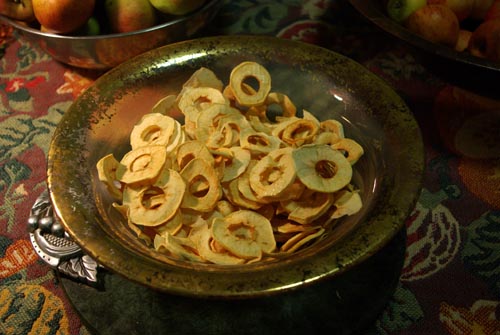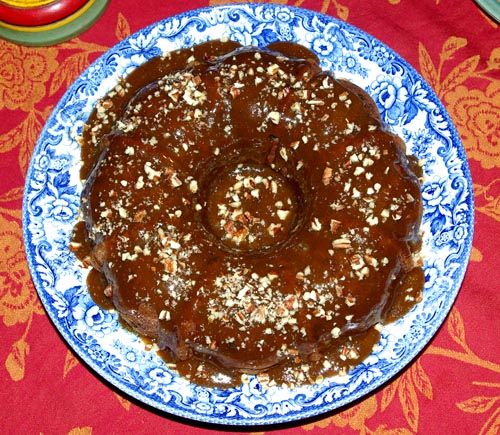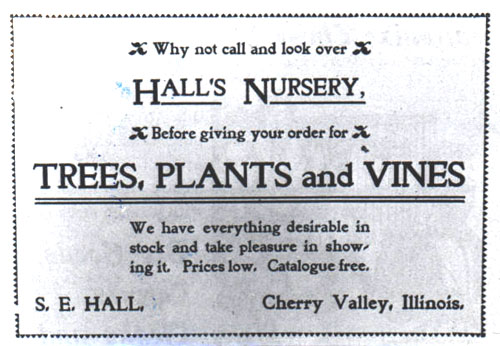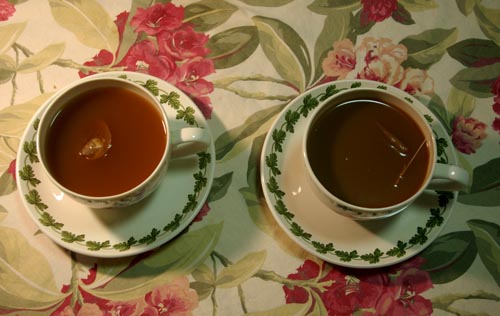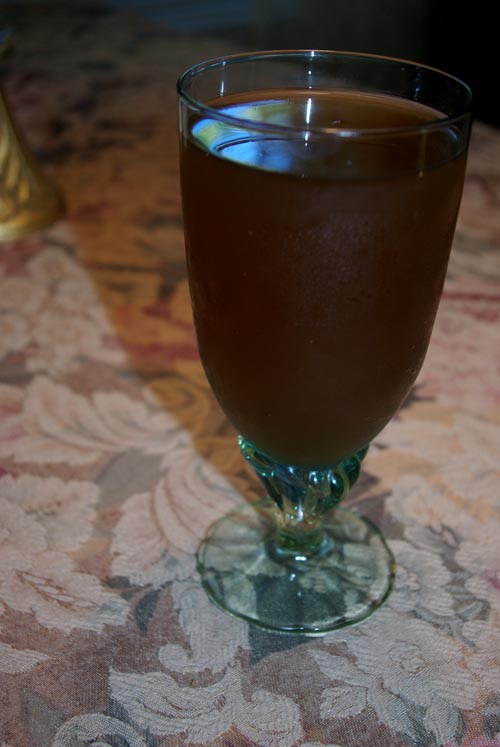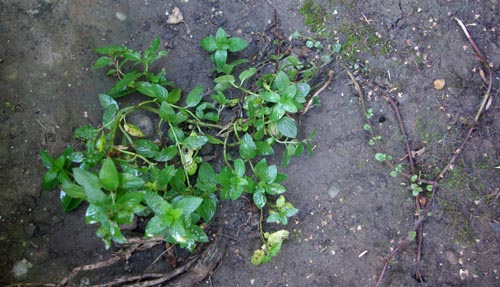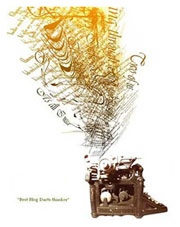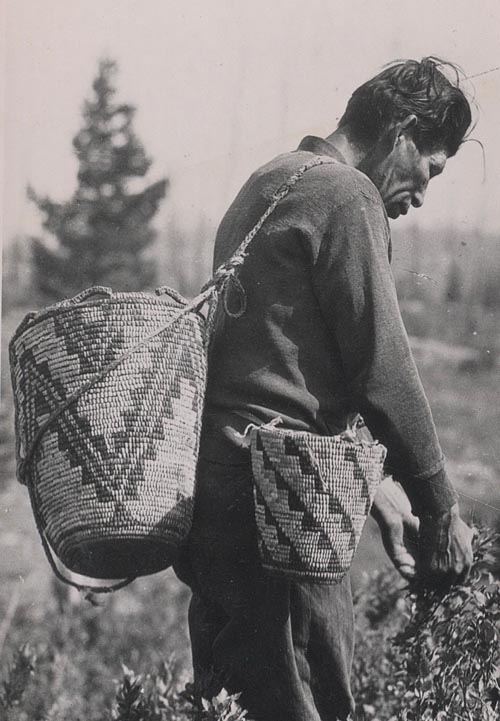
Native American Indian picking huckleberries
Merriam Webster Dictionary
Main Entry: 1na·tive
Pronunciation: \ˈnā-tiv\
Function: adjective
Etymology: Middle English natif, from Middle French, from Latin nativus, from natus, past participle of nasci to be born — more at nation
Date: 14th century
1 : inborn, innate
2 : belonging to a particular place by birth
6 a : grown, produced, or originating in a particular place or in the vicinity : local b : living or growing naturally in a particular region : indigenous
synonyms native, indigenous, endemic, mean belonging to a locality. native implies birth or origin in a place or region and may suggest compatibility with it . endemic implies being peculiar to a region
Continuing my quest to learn more about native plants I set out this week for the small rural town of Boonville to Anderson Valley Nursery to meet horticulturist Ken Montgomery. I chose to take the long way ’round and first made a stop at a friend’s to collect apples, blackberries and huckleberries, and, as it turns out, I learned later in the day from Ken that huckleberries are native and wild. So the story might well begin there. They are new to me. Here’s what they look like. They will soon find their way into scones!
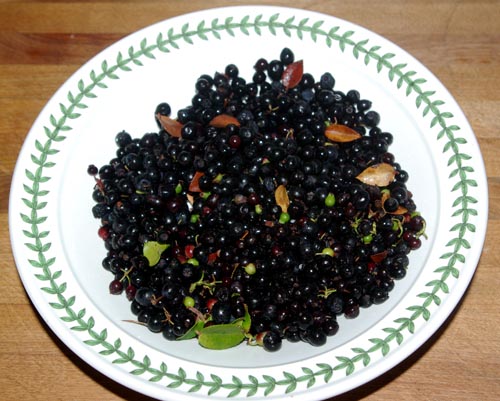
Driving the backroads to Boonville, via the coast, I was struck by the numbers of ecological microenvironments I passed through to arrive at my destination. Golden rolling hills filled with manzanita and oak trees, grasslands, redwood forests and then seaside, returning through vineyards and apple orchards. I found myself wondering as I drove along, “How long has what I’m looking at been here? And what, in fact, am I seeing?” I knew from my Native American history studies that the early tribes have been documented back at least 12,000 years on neighboring lakes. Hard to imagine, isn’t it? Given that the indigenous tribes were not farmers, but hunters and gatherers, and harbored zero concept of ownership, these early peoples were simply born and then lived in harmony with what they encountered. They weren’t importing from somewhere else. So the landscape (other than earthquakes and glaciers!) remained essentially the same for very long periods of time.
I know for a fact from my own experience that as I’ve traveled about the United States, and even Europe, I have had a very strong inclination to grow plants I’m familiar with. And no wonder. For it is in plants that we find our sense of place, believe it or not. How many of you have transported yourselves to a new locale and immediately planted flowers that reminded you of the place from which you had just come? When I was in Arizona I planted sunflowers and Scotch broom [I know. I know. Invasive plant.] to comfort myself. I have now been pondering this human inclination for weeks: it is primarily plants that create the sense of place. I find this an amazing realization.
What goes on during those thousands of years as those plants are developing, along with the critters who inhabit those plantlands is what I am now calling an Evolutionary Contract. I’m using this term (which perhaps others have used as well) to talk about the subtle agreements that are made between plants and insects and animals, as well as other plants, that evolve between these elements, that ensure the survival of that plant, that bug, that animal. These miraculous agreements require an intense and careful scrutiny to uncover, to understand and appreciate. It is an even bigger step to embrace and foster a desire to want to protect or restore these agreements where disrupted.
In interviewing Ken Montgomery, who has been pondering these questions for several decades, he brought squarely into my consciousness that part of that Evolutionary Contract I’m exploring for myself here in California is fire, for California is a fire dependent ecology. We are only beginning to understand this. For decades we have engaged in fire suppression, interrupting this intrinsic Evolutionary Contract which expresses itself through things like seedpods that require fire to open, and thus to regenerate. The fact is that while, yes, animals may die in fires, forests are rekindled with life and new growth through fires, and so at the end of that destructive cycle, vast amounts of new food appears for the enrichment of the surviving populations. Ken reminded me of the well intentioned psa’s that abounded in preceeding decades through the image and messages of Smokey the Bear.

Smokey the Bear
While I am the first to consider the accidental and deliberate setting of forest fires, I am also learning to embrace the concept of controlled burning, part of the landscape restoration process in California. Ken explained to me that the Native American Indians obviously had no way of stopping natural fires. When a fire started in the wilderness, it burned until the rains arrived. I’m trying to imagine the effect this natural phenomenon would have on the environment, were this possible today. Actually, last summer there were over 200 fires burning in Northern California that were allowed to burn themselves out. I found this impossible to imagine so I used Google Earth to expand my perception. This is when I began to understand just how vast California truly is.
“Yes,” says Ken. “To try to define what a native plant is in California is basically impossible. There are a multitude of environments in this state including areas like the Mediterranean, but also desert, mountains, and redwood forests. So what we are beginning to call native plants is indigenous.” This gives horticulturists a very different lens through which to view plants, asking if they are indigenous. What strikes me most about this reframe I find in the dictionary definitions above. I am struck by this line: “native implies birth or origin in a place or region and may suggest compatibility.” Indeed, in this intimation regarding suggested compatibility we find the key to the Evolutionary Contract.
OK, but so what?
It was very helpful to me that Ken, who himself is involved in largescale “restoration” that involves bringing indigenous materials (i.e. native plant cuttings or seeds) from a specific locale, nurturing and growing them and returning them to the locale, makes a distinction between urban landscaping and rural landscaping. In this context one sees that urban landscaping truly lends itself to the planting of exotic ornamentals if one wishes with one caveat: Ken makes the point that one need be mindful not to plant invasive and aggressive varieties which could escape and change ones environment drastically over time. Not good. But in a rural environment, one is much more inclined to be motivated to restore what was or to enhance what is. I think this is bound by rural folks being much more attuned to the concept of plants as defining place. In a City is it possible one might be more inclined to define place by buildings, events, etc.? These are new thoughts for me, that are being planted, stored and undoubtedly will sprout in various forms over time.
What is clear to me in a town surrounded by agriculture, albeit wine country, is that I want to now include in my exotic ornamental garden some native plants for a couple of basic reasons. Most important is that I have this image of all the little critters that move from place to place, moving about the surrounding countryside, until they hit a wall of concrete and houses and unfamiliarity, obviously none of which is part of the Evolutionary Contract stored in their miraculous dna. So my imagination now is envisioning including in my relatively smallish patchwork of smalltown property some sign of continuity. Maybe some of these beautiful grasses Ken has.
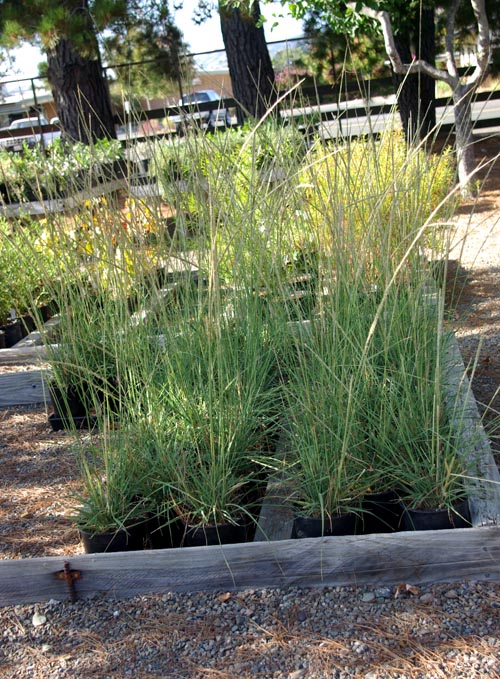
California native grasses
Or perhaps I will build on the sword ferns I already have in the front yard.
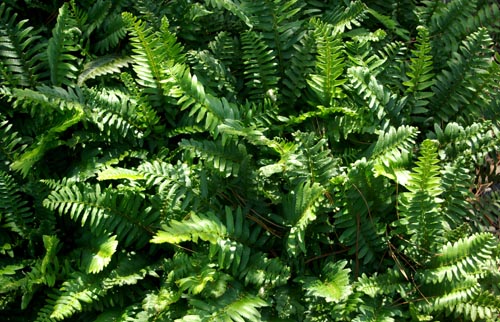
sword ferns
I want to do this because I am imagining that as these critters move about as they rightfully may I want to offer them something that allows them to intepret the environment they encounter as consistent with their inner programming. I want them to “think”, “OK, this is right and familiar.” Not, “Where am I? I’ve lost my way.” By including something from the old world which is their orientation it gives them a stepping stone over what we have created on top of their expected environment until they reach the outer edges on the far side of that (cement, highway, house, fill in the blank), allowing them to hopscotch back into their comfort zone. Does this make sense? There are people writing about creating these “corridors” so I know I’m not alone in this thinking. However, is this widespread? Hardly.
“The future of horticulture is ‘site specific cultivation,’ ” says Ken. “We are not planting anything that came further away than five miles from the site.” This taps into a meme that is moving rapidly through the international gardening community, the locavore movement. Amazingly, Ken reassures me that state parks in California are on board with this plan and are actively restoring wilderness according to these principles.
Readers can count on my continuing to explore this cutting edge approach to gardening and landscaping. I am moderate in my approach, but my heart says this is a direction to explore. Will you join me?
Love and gardening blessings,
Kathryn xoxo
Synchronistic footnote: Following Philip’s comment this morning I was reminded that PBS has been running the Ken Burns’ special on National Parks, so I turned on PBS to see if they might be airing this on a Sunday morning. No. But at the very moment I tuned in a woman was speaking of “the corridors that link habitats for wild critters.” No, really. 🙂
Posted on October 2nd, 2009 by Kathryn
Filed under: Plants | 15 Comments »


